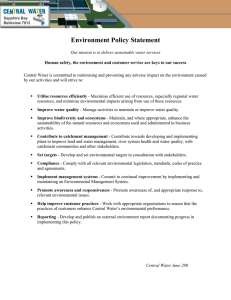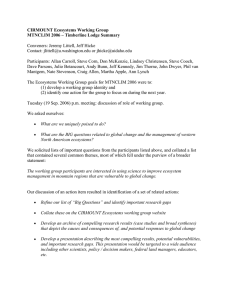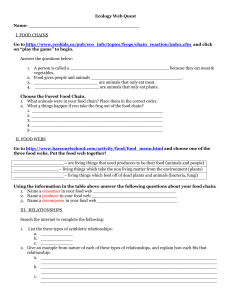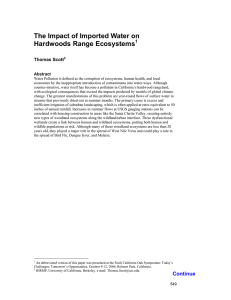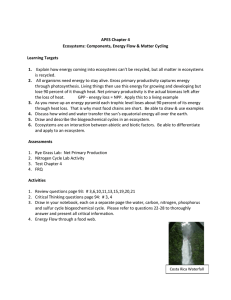Unit B: Sustainable Ecosystems 4.1: Engineered Ecosystems and Modern Agriculture pg. 119
advertisement
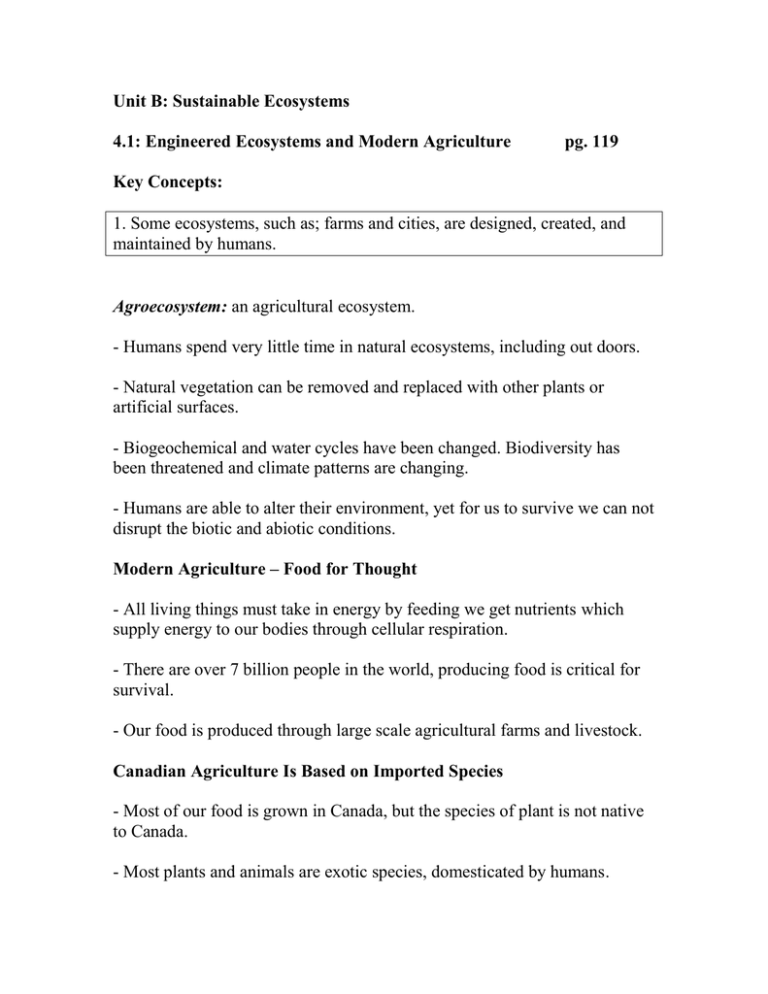
Unit B: Sustainable Ecosystems 4.1: Engineered Ecosystems and Modern Agriculture pg. 119 Key Concepts: 1. Some ecosystems, such as; farms and cities, are designed, created, and maintained by humans. Agroecosystem: an agricultural ecosystem. - Humans spend very little time in natural ecosystems, including out doors. - Natural vegetation can be removed and replaced with other plants or artificial surfaces. - Biogeochemical and water cycles have been changed. Biodiversity has been threatened and climate patterns are changing. - Humans are able to alter their environment, yet for us to survive we can not disrupt the biotic and abiotic conditions. Modern Agriculture – Food for Thought - All living things must take in energy by feeding we get nutrients which supply energy to our bodies through cellular respiration. - There are over 7 billion people in the world, producing food is critical for survival. - Our food is produced through large scale agricultural farms and livestock. Canadian Agriculture Is Based on Imported Species - Most of our food is grown in Canada, but the species of plant is not native to Canada. - Most plants and animals are exotic species, domesticated by humans. Table 2: Selected Native and Non-native Crops and Livestock Species Grown and Raised in Canada Plant Crops Livestock Species Non-native Species Corn, wheat, potatoes, beans, barely, rye, oats, soybeans, canola, tomatoes, apples, squash, peanuts, carrots. Cattle, pigs, chickens, sheep, goats. Native Species Strawberries, maple sap, wild rice, blueberries. Turkeys Agroecosystems Differ from Natural Ecosystems Monoculture: the cultivation of a single crop in an area. Pest: any plant, animal, or other organism that causes illness, harm, or annoyance to humans. - Farms are not natural ecosystems since they grow exotic species, the uniform growth pattern, low biodiversity, and use fertilizers. - Farmers grow crops in monocultures, only one species are grown per field. - Ecological cycles are disturbed, and biodiversity is reduced. - Sustainability comes into question, management practices must be developed to sustain productivity. - Farmers try to create ideal and uniform growing conditions. - Elimination of competitors, disease, and pest is a must for monocultures to be successful. Figure 3: In a) natural ecosystems, many species interact, participating in and maintaining natural cycles, whereas in b) agricultural ecosystems, a very limited number of species interact, and most cycles are directly altered by human activity. Evidence of Learning: Students can … - explain the impact of human activity in human-designed ecosystems. - describe how agriculture can impact the sustainability of an ecosystem. - identify the major differences between natural ecosystems and agroecosystems. Check Your Learning Questions 1 – 11, page 122 Summary: - Engineered ecosystems, such as; farmland and cities, make up a large portion of Earth’s land area. - Most of Canada’s crop and livestock species are introduced, non-native species. - Engineered ecosystems have uniform abiotic features and low biodiversity. - Most monoculture crops consist of plants of uniform age and size. - Farmers attempt to create ideal abiotic and biotic growing conditions for crops.


